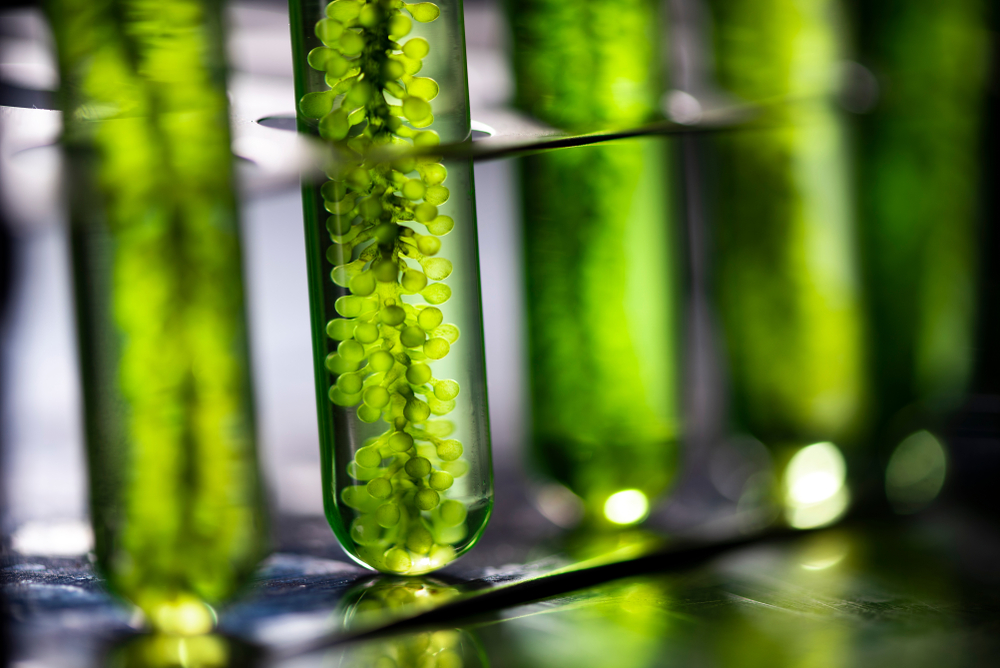Mixotrophic algae use both a plant-based and animal-based growing mechanism. This allows them to produce twice the amount of biomass of other algae at a lower cost, says PhD candidate Fabian Abiusi. This makes algae cultivation more competitive.
Autotrophic
In traditional algae farming, the algae cells convert daylight and CO2 into carbon compounds, with oxygen as a by-product. This autotrophic process is also used by plants. To maintain the algae’s growth, the farmers must continuously ventilate to add CO2 and remove oxygen. This costs energy and money, making algae production expensive. This is why algae are currently being cultivated as an expensive feedstock for pigments, for example, but not as an ingredient for cattle feed, fish feed or foodstuffs.
Heterotrophic
Mixotrophic algae, however, are able to combine the aforementioned process with growth that does not require sunlight. In this second process, known as the heterotrophic process, they convert organic materials such a sugar into carbon compounds to benefit cellular growth. This second process, which we also see in humans, uses oxygen and releases carbon dioxide. Thus, the by-product of one process, serves as the resource for the other.
Bioreactor
PhD candidate Fabian Abiusi tested the mixotrophic algae Chlorella sorokiniana and Galdieria sulphuraria from a large outdoor bioreactor in Spain. He discovered that when sugar was added, the bioreactor no longer required a system to remove the oxygen and add CO2. He only needed to slowly pump the algae around to enhance production. This means it would be possible to cultivate these algae in a simple and cheap reactor. Instead of sugars, the algae could also be “fed” with waste streams from the food industry.
With this data, Abiusi calculated the production costs of the mixotrophic cultivation. The production cost of Chlorella sorokiniana, which is currently cultivated autotrophically, would decrease from 4.9 euro to 2.6 euro per kilo, and that of Galdieria sulphuraria would drop from 11.8 to 4 euro per kilo.
AlgaeParc
Galdieria is relatively new in algae farming, supervisor Marcel Janssen explains. This resilient alga produces amino acids and a blue pigment that is much coveted by the food industry, according to Janssen. There is a drawback: Galdieria has a strong cell lining, which means the extraction of these products merit attention. In a new PhD project, the Bioprocess Engineering group will further test the mixotrophic cultivation of Galdieria in its testing facility AlgaeParc.
You may also like:

 Photo Shutterstock
Photo Shutterstock